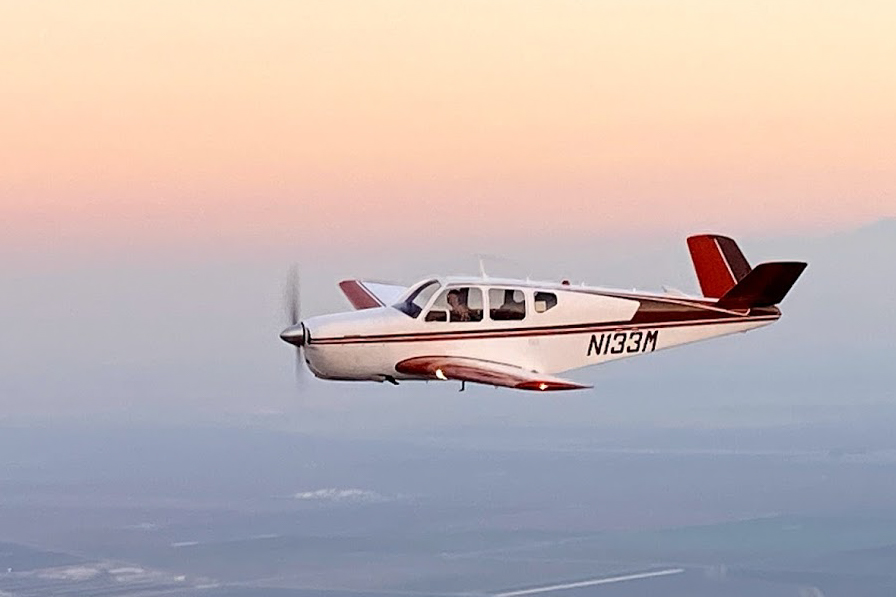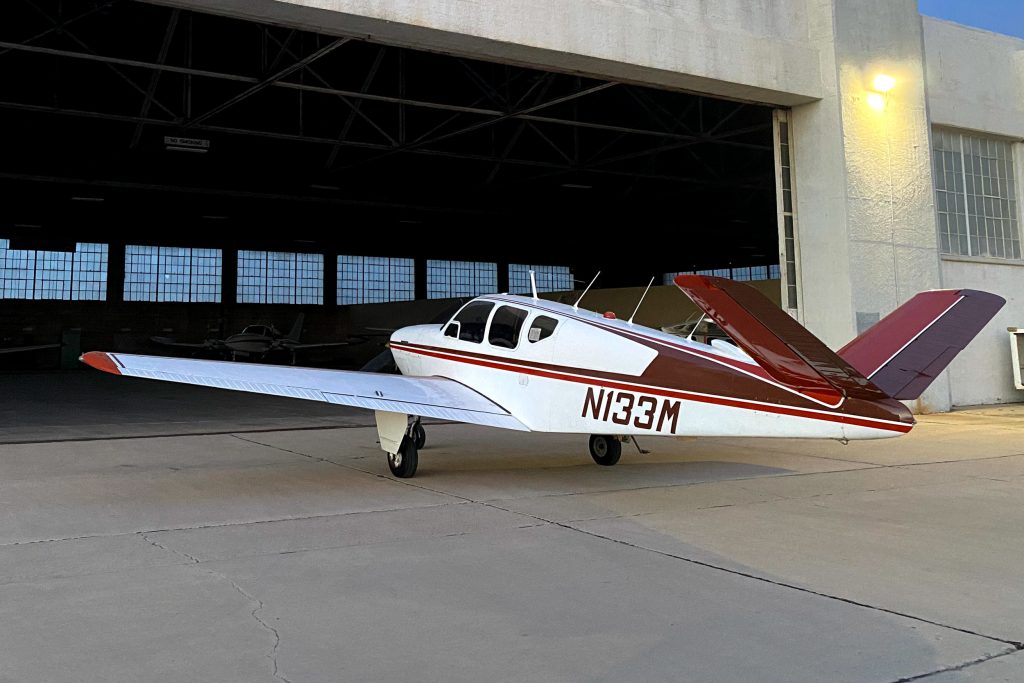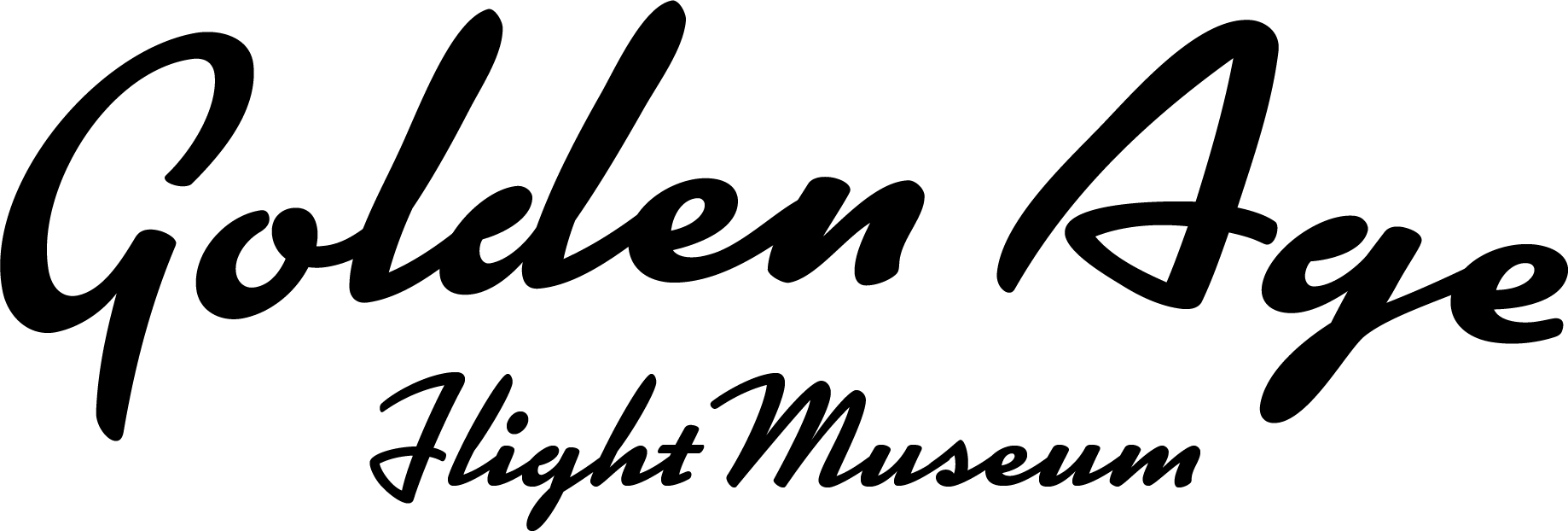1947 Beechcraft Bonanza

Our Bonanza was generously donated by its previous owner who did not fly anymore. The aircraft sat in a hangar, untouched for about 20 years when we acquired it.
It was flown to Bakersfield after a few long weeks of maintenance and new parts.
We definitely saved this one from the scrap yard and brought it back to life.
Origins and Development
In the aftermath of World War II, the aviation industry anticipated a surge in demand for modern, high-performance civilian aircraft as returning pilots sought personal transportation. Walter Beech, founder of Beech Aircraft Corporation in Wichita, Kansas, envisioned a sleek, all-metal, single-engine aircraft to capture this market. The result was the Beechcraft Model 35 Bonanza, designed by a team led by Ralph Harmon, with contributions from engineers Noel Naidenoff, Alex Odevseff, Jerry Gordon, and Wilson Erhart. The prototype first flew on December 22, 1945, piloted by Vern L. Carstens, and received its airworthiness certificate from the Civil Aeronautics Authority (CAA) in March 1947. Unlike its competitor, the Cessna 195, which relied on prewar technology with a high-wing, radial engine, and fixed tailwheel, the Bonanza introduced a futuristic low-wing design, a horizontally opposed six-cylinder engine, retractable tricycle landing gear (initially with a non-steerable, castering nosewheel), and a distinctive V-tail, earning it the nickname “butterfly tail.” This V-tail, tested during WWII, reduced weight and parts count while maintaining stability comparable to a conventional three-surface tail, as confirmed by wind-tunnel tests. The Bonanza’s all-metal construction, with minimal fabric on early models, set a new standard for general aviation, blending luxury, speed, and efficiency for the sophisticated pilot. Over 1,000 Model 35s were built in 1947, signaling its immediate success.
Evolution of Models and Variants
The Bonanza family evolved through three major variants: the Model 35 (1947–1982), Model 33 Debonair/Bonanza (1960–1995), and Model 36 (1968–present), with numerous sub-variants reflecting advancements in performance, comfort, and technology. The Model 35, launched in 1947, featured a 165 hp Continental E-165 engine, later upgraded to the 185 hp E-185-11 (A35, 1949) and 205 hp versions (B35, 1950). By 1951, the C35 introduced a 20% larger V-tail chord and a 33-degree V-angle for improved stability, along with a 225 hp Continental IO-470-J. The V35 (1966–1982) brought a 285 hp Continental IO-520-B and turbocharged TSIO-520-D options (V35TC), boosting performance to a 200 mph maximum speed. However, the V-tail’s structural integrity faced scrutiny in the 1980s due to in-flight breakups, often linked to pilots exceeding speed and G-load limits. A 1984 AOPA study found the Bonanza’s accident rate was lower than other aircraft (1982–1989), attributing many incidents to pilot error, particularly among inexperienced owners, earning it the moniker “forked-tail doctor killer.” A stabilizer reinforcement kit reduced breakup incidents significantly.

In 1960, Beechcraft introduced the Model 33 Debonair, a cost-effective alternative with a conventional tail, 225 hp IO-470-J engine, and spartan interior. Priced at $19,995, it targeted competitors like the Piper Comanche and Cessna 182 but struggled due to its basic design. By the mid-1960s, most buyers opted for Bonanza-like upgrades, leading Beechcraft to drop the Debonair name with the E33 in 1968, which adopted the 285 hp IO-520-B. The F33A, produced until 1995, became a reliable, high-performance option with a conventional tail, fetching $200,000–$300,000 for well-maintained models today. The Model 36, introduced in 1968 and still in production, stretched the fuselage by 10 inches, added club seating, and featured a 285 hp IO-520-B (later 300 hp IO-550-B in the G36). Certified in the utility category, it offered a 100 cu ft cabin, 37 cu ft baggage space, and a 1,073 lb useful load, making it ideal for long trips. The G36, with a Garmin G1000 avionics suite introduced in 2006, remains a flagship model, priced around $800,000–$1,000,000 new. Over 17,000 Bonanzas have been built across all variants, a record for continuous production.
Notable Achievements and Record Flights
The Bonanza’s performance inspired record-breaking flights that showcased its reliability and range. In January 1949, William P. Odom flew the fourth Model 35, named Waikiki Beech (N80040), from Honolulu to Oakland, California, covering 2,900 miles in 22 hours and 6 minutes, the first light-plane flight from Hawaii to the mainland. On March 6–8, 1949, Odom set a nonstop distance record, flying 5,273 miles from Honolulu to Teterboro, New Jersey, in 36 hours and 1 minute, equipped with 126-gallon cabin and 62-gallon wingtip tanks. In 1951, Congressman Peter F. Mack Jr. flew the same aircraft, renamed Friendship Flame, on a solo goodwill world tour from October 7, 1951, to January 27, 1952, visiting 45 cities in 31 countries to promote peace. Marian Rice Hart, who purchased an N35 in 1961, made seven solo trans-Atlantic flights starting in 1966 at age 74, flying over every continent except Antarctica until age 87. In 2014, 19-year-old Matt Guthmiller set a Guinness World Record as the youngest solo circumnavigator, flying a 1981 A36 Bonanza 30,500 miles across 15 countries in 44 days. These feats underscored the Bonanza’s versatility and durability.
Design Innovations and Controversies
The Bonanza’s V-tail, designed to reduce weight and drag, was a hallmark of the Model 35, offering control response equivalent to a 40% larger conventional tail. Its all-metal airframe, retractable gear, and low-wing configuration contrasted with the fabric-covered, radial-engine taildraggers of the era, like the Cessna 195. The tricycle gear, rugged for unpaved strips, and high wing incidence improved landing safety. However, the V-tail faced controversy in the 1980s when in-flight breakups raised concerns about ruddervator flutter and structural limits. AOPA’s analysis clarified that many accidents resulted from pilot error, often by overconfident amateurs exceeding the aircraft’s envelope. A stabilizer reinforcement kit and pilot training programs, like the American Bonanza Society’s (ABS) Beechcraft Pilot Proficiency Program (BPPP) since 1983, addressed these issues, enhancing safety. The nonstandard landing gear switch placement in some models caused gear-up landings, prompting design updates. The Model 36’s conventional tail eliminated V-tail concerns, and modern G36 models feature advanced avionics, including the Garmin G1000, reinforcing the Bonanza’s reputation for reliability and innovation.
Experimental and Derivative Models
Beechcraft explored experimental designs based on the Bonanza. The Model 40, a 1948 twin-engine prototype with two 180 hp Franklin engines in an over/under arrangement driving a single propeller, was abandoned due to certification requirements for a firewall between engines. The Twin Bonanza, introduced in 1951, shared only the fuselage sides, windows, and cabin door with the single-engine Bonanza, but its heavier airframe struggled against lighter competitors like the Cessna 310. This led to the Beechcraft Travel Air, a twin-engine derivative using the Bonanza’s fuselage, which evolved into the successful Baron in 1961. The USAF tested the Bonanza 36 as a drone for Operation Pave Eagle, with six prototypes and 27 production models featuring turbocharging, three-bladed propellers, and tip tanks. Iran’s Defense Industries Organization reverse-engineered the F33A, producing approximately 14 Parastu aircraft with winglets by 2001. These derivatives highlight the Bonanza’s adaptability.

Notable Accidents and Safety Record
The Bonanza’s high performance attracted affluent but sometimes undertrained pilots, contributing to its “doctor killer” reputation. Notable accidents include the October 1947 crash of Oregon Governor Earl Snell and others in a Model 35 due to stormy weather; the 1952 crash of Maharaja Hanwant Singh in India, likely due to fatigue; the 1955 crash of actor Robert Francis after takeoff from Burbank; the 1959 crash of Buddy Holly, Ritchie Valens, and The Big Bopper in poor weather; the 1975 crash of Congressman Jerry Pettis in adverse conditions; the 1981 crash of Steve Wozniak due to lack of a high-performance endorsement; and the 1982 crash of Randy Rhoads after a wing struck a tour bus. Despite these incidents, AOPA’s 1982–1989 study showed the Bonanza’s accident rate was lower than comparable aircraft, with pilot error as the primary cause. ABS’s safety programs and maintenance evaluations have since improved its safety record.
Modern Era and Legacy
Since 2014, Beechcraft, now under Textron Aviation, has focused on the Model 36, particularly the G36, which features a 300 hp Continental IO-550-B, a 194-knot cruise speed, and a 930-mile range. With a luxurious cabin (cream Brisa and black cherry Strata trim, mahogany accents), it remains a top choice for personal and business travel, priced at $800,000–$1,000,000 new, with used Model 35s ranging from $80,000 to $250,000 and F33As from $200,000 to $300,000. The Bonanza’s continuous production since 1947—over 18,000 units—makes it the longest-produced aircraft in history. Its influence extends to derivatives like the Baron and military trainers like the T-34 Mentor. Recognized by Fortune magazine in 1959 as one of the 100 best-designed mass-produced products, the Bonanza’s blend of aesthetics, performance, and reliability cements its status as a general aviation icon. The ABS, founded in 1967, supports owners with technical advice, maintenance programs, and a digital library, preserving the Bonanza’s legacy for future generations.
